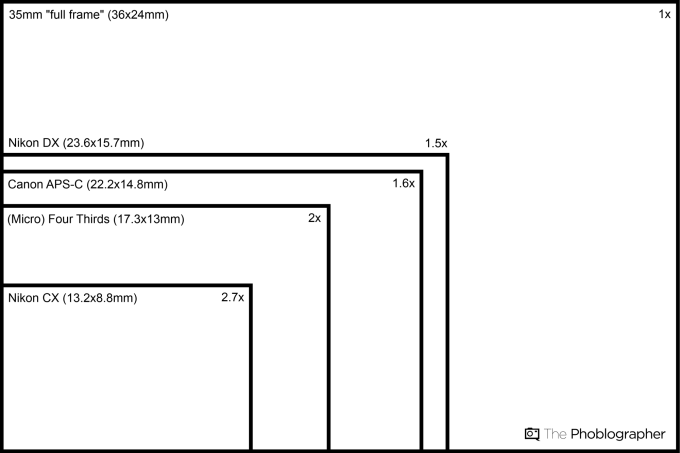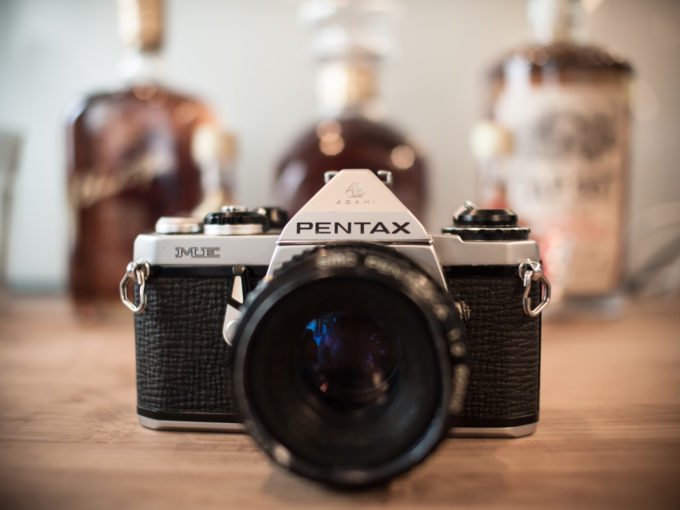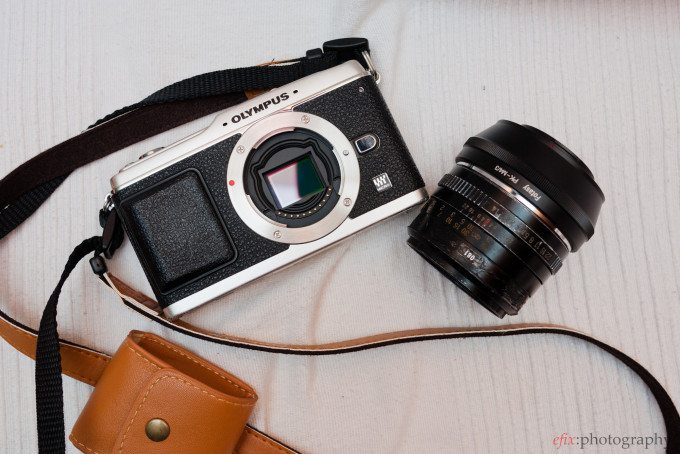When adapting the lens of one camera system to another, you may not always get the same results. Part of the reason is that your camera system may have a smaller sized sensor than the system the lens was made for. This will lead to an image that appears ‘cropped’ compared to an image taken with the same lens on a camera with a larger sensor. We’re speaking of the so-called ‘crop factor’, which determines the difference between the appearance of images taken with cameras with different sensor sizes, but the same lens. After the break, we’ll go into detail how the crop factor is calculated, and how it relates to a lens’ focal length and other properties.
When you first bought that new Canon EOS Rebel, you might’ve read about a lens called the ‘nifty fifty’, or have come across an opinion piece praising the 50mm focal length, and why everyone should have a 50mm lens. So you were seduced to buy it, and ended up wondering why the angle of view of the lens is so narrow–almost like that of a short tele lens. Well, the answer is simple: back in the old days of film photography, 50mm was widely regarded as the standard focal lengths for most situations, with an angle of view that is neither too narrow nor too wide. The thing is, when digital SLRs became affordable for the masses, they weren’t equipped with sensors the size of 35mm film, but with smaller ‘APS-C’ sensors.
A smaller sensor of course records less of the image the lens projects than a larger sensors. The ‘nifty fifty’, which Canon’s cheap but cheerful 50mm f1.8 lens is commonly referred to as, was designed to be used on a ‘full frame’ body–i.e. on a camera with a recording medium the size of 35mm film, which is 36mm wide and 24mm high. Only on a camera with a 36x24mm full frame sensor, the nifty fifty’s diagonal angle of view will be 46°. Used on a camera with a smaller sensor, it will be smaller, yielding an image that appears to be taken with a short tele lens. On an APS-C camera like the Canon Rebel series, the nifty fifty will yield images with a diagonal a-o-v of only 31°, which corresponds to that of an 80mm lens on a full-frame body–and 80mm is almost a standard focal length for portraiture.


The difference in angle of view or ‘equivalent’ focal length between the same lens used on APS-C and full frame is called the ‘crop factor’. The crop factor is the ratio of the difference between two sensors’ diagonal sizes. A 36x24mm full frame sensor has a diagonal of ~ 43mm (= sqrt(36mm^2+24mm^2)). The sensor in a Canon Rebel however only has a diagonal of 26.7mm. The ratio of 43mm / 26.7mm is roughly 1.6–which is the crop factor for a Canon APS-C camera. Now when using a 50mm lens on a Canon APS-C body, you have to multiply its focal length by the sensor’s crop factor in order to know what the resulting image will look like compared to 35mm full frame. Since 50mm multiplied by 1.6 is 80, your resulting image will be equivalent to that taken with an 80mm lens on a full frame body.
For comparison, most other APS-C format cameras have a crop factor of roughtly 1.5, which is a little less than that of Canon, since they use slightly larger sensors. The popular mirrorless Micro Four Thirds format uses a sensor with a diagonal only half the size of that of a 35mm full frame sensor, and consequently it has a crop factor of 2. So when using a 50mm lens on an Olympus E-P5, it will yield an image equivalent to that taken with a 100mm lens on a full frame body. Nikon’s 1 system uses an even smaller sensor with a crop factor of 2.7, and finally the Pentax Q system started out with a tiny 5.6x crop sensor–on it, your 50mm lens will act like an enormous 280mm tele lens.

Focal length and angle of view are only one part of the equation, however. The other part of the equation relates to the aperture size of the lens, and to the depth of field that it creates. In order to properly calculate the way a lens behaves when used on a camera with a sensor that is smaller than what the lens was designed for, you need to multiply both focal length and aperture size with the sensor’s crop factor. While multiplying the focal length with the crop factor will tell you how the lens’ angle of view will change, multiplying the aperture value will tell you how the depth of field it creates relates to the full frame format. This, however, is where it gets complicated. So in order not to confuse you all too much, we’ll try to keep it simple.
The term ‘depth of field’ describes how far the area in which things are in focus extends in your image. Depending on your lens’ focal length, your chosen aperture setting and the distance you’re focusing at, objects will appear to be in focus in a more or less extensive area. This area might be anywhere inbetween the lens’ close focusing limit and infinity, and it might extend anywhere between a few millimeters and several hundred meters. Technically, it also depends on how large your image is printed, and from what distance you’ll be viewing it, but we’re going to leave that out of consideration for now.
Simply put, by multiplying both the focal length and the aperture size of your lens, the result you get is what kind of lens you would need to use on a full frame body in order to get the same image as with your APS-C body. Let’s say you’re taking a head shot with your nifty fifty on your Canon Rebel. Your subject is two meters away and you focus on their eyes, with the lens wide open at f/1.8. In order to achieve the exact same result on a full-frame body, you’d have to use a lens with a focal length 0f 50mm x 1.6 = 80mm, and with an aperture setting of f1.8 x 1.6 = f2.8. Or to put it another way: a 50mm f1.8 lens used on a Canon APS-C body behaves roughly like a (virtual) 80mm f2.8 lens would on a full frame body. This is because the depth of field that a lens creates at any given aperture setting gets smaller the longer the lens’ focal length gets. So in order to achieve the same amount of depth of field as with a 50mm lens, an 80mm lens needs to be stopped down further.

Mind though that these values are only equivalents, and are meant as guidelines for those who are thinking in 35mm full frame terms. Since 35mm full frame still is the gold standard in photography, we’re used of thinking of a 35mm lens as a wide angle, of a 50mm lens as a normal lens or of an 85mm lens as a portrait lens. On cameras with smaller sensors, we need to use shorter focal lengths to get the same angles of view. On Micro Four Thirds, 17mm is a wide angle, 25mm is a normal lens and 45mm is a portrait lens. And since Micro Four Thirds is its own proper camera system, there are lenses in these focal lengths available for it, just like there are Canon’s EF-S lenses for their APS-C sensor cameras, or Nikon’s DX lenses for their DX format cameras.
One last reminder before I let you go. I told you that in order to calculate an adapted lens’ behaviour on a camera with a smaller sensor, you need to multiply both focal length and aperture size by the sensor’s crop factor. The resulting equivalent aperture value relates only to depth of field, and not to light gathering capability. An f1.8 lens is, and always will be an f1.8 lens. The amount of light that passes through it will not change when it is used on a smaller sensor. The shutter speed and ISO value that you need to select in order to get a properly exposed image will be the same, no matter whether your sensor is full frame sized or APS-C sized or even smaller. When it comes to light, f1.8 is f1.8. Only when it comes to angle of view and depth of field does the crop factor apply.
For more on this topic, Wikipedia’s article on crop factor is a good starting point.


Please Support The Phoblographer
We love to bring you guys the latest and greatest news and gear related stuff. However, we can’t keep doing that unless we have your continued support. If you would like to purchase any of the items mentioned, please do so by clicking our links first and then purchasing the items as we then get a small portion of the sale to help run the website.


